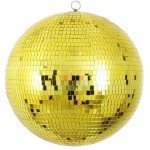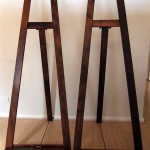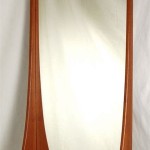Is It Legal To Drive A Car With A Broken Wing Mirror?
Driving with a broken wing mirror might seem like a minor infraction, but its legality and safety implications are more complex than they appear. Regulations regarding vehicle maintenance and equipment vary significantly by jurisdiction, making it crucial to understand the specific laws where the vehicle is operated. This article will explore the legal ramifications of driving with a damaged or missing wing mirror, as well as the safety concerns associated with this practice.
Many jurisdictions mandate specific equipment for vehicles operating on public roads. These regulations often include requirements for mirrors, designed to ensure adequate visibility for the driver. The precise requirements regarding the number, type, and placement of mirrors can differ. Some regions may require two functioning wing mirrors, while others might mandate only a driver-side mirror if a functional rearview mirror is present. Therefore, determining the legality of driving with a broken wing mirror necessitates consulting the specific vehicle code for the applicable area.
In jurisdictions requiring two operational wing mirrors, driving with a broken one could constitute a traffic violation. This could result in penalties such as fines, or in some cases, even vehicle impoundment. The severity of the penalty can depend on the jurisdiction and the specific circumstances of the violation. For example, a slightly damaged mirror might be viewed differently than a completely missing one. Additionally, compounded violations, such as driving with a broken mirror and a broken tail light, could lead to more severe penalties.
Beyond the legal implications, driving with a compromised or absent wing mirror poses significant safety risks. Wing mirrors provide crucial visibility for lane changes, merging, and monitoring traffic approaching from the rear. A broken or missing mirror creates a blind spot, significantly increasing the risk of an accident. Without a complete view of surrounding traffic, drivers may unknowingly move into occupied lanes, misjudge distances, or fail to notice approaching vehicles.
The size and location of the blind spot created by a missing or damaged wing mirror amplify the potential dangers. This blind spot can obscure motorcycles, smaller cars, and even pedestrians, making it difficult for the driver to perceive their presence. This lack of awareness can lead to collisions, particularly during maneuvers like changing lanes or turning at intersections.
While some drivers might attempt to compensate for a broken wing mirror by relying solely on the rearview mirror or physically turning their head, these methods offer insufficient replacements. The rearview mirror provides a limited field of vision directly behind the vehicle, leaving significant blind spots on either side. Physically turning the head to check blind spots, while sometimes necessary, can distract the driver from the road ahead and increase the risk of a forward collision.
Ignoring a broken wing mirror can also suggest negligence towards vehicle maintenance. Regular vehicle inspections and prompt repairs are essential for ensuring road safety. A broken wing mirror, though seemingly minor, can be a symptom of broader neglect, potentially leading to more significant mechanical problems that could compromise safety.
The cost of repairing or replacing a wing mirror is generally significantly less than the potential costs associated with a collision. These costs can include not only vehicle repairs but also medical expenses, legal fees, and increased insurance premiums. Therefore, from a financial perspective, promptly addressing a broken wing mirror is a prudent investment in safety and avoids potential future expenses.
Locating replacement wing mirrors is usually straightforward. They can often be purchased from auto parts stores, dealerships, or online retailers. Many vehicles have standardized mirror designs, making replacements readily available. However, for vehicles with specialized or less common mirror types, it might be necessary to contact the manufacturer or a specialized parts supplier.
For drivers unsure about the specific legalities regarding wing mirrors in their area, consulting local law enforcement agencies or the Department of Motor Vehicles (DMV) is highly recommended. These agencies can provide definitive information on local regulations and clarify any ambiguities. Staying informed about local traffic laws helps ensure compliance and contributes to safer roadways for all.

Broken Smashed Missing Wing Mirrors Are They Legal

Broken Smashed Missing Wing Mirrors Are They Legal

Damaged Or Missing Wing Mirrors Are They Legal Kwik Fit

Damaged Or Missing Wing Mirrors Are They Legal Kwik Fit

Is It Illegal To Drive With A Broken Wing Mirror Motorway Windscreens

Know The Law Driving With A Broken Mirror Trustagarage

Is It Illegal To Drive With A Broken Wing Mirror Motorway Windscreens

Damaged Or Missing Wing Mirrors Are They Legal Kwik Fit

Is It Illegal To Drive A Car With Broken Or Damaged Mirrors

Can I Drive With Damaged Or Missing Mirrors Yourmechanic Advice








